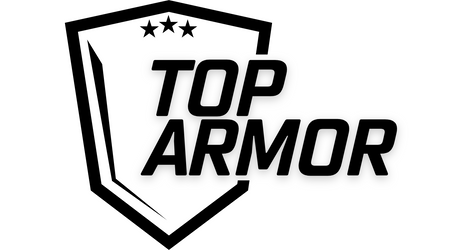
Everything You Need to Know About The New NIJ Standard 0101.07
Introduction
One critical aspect of officer and civilian safety is the use of body armor. The National Institute of Justice (NIJ) has played a pivotal role in ensuring that law enforcement officers are equipped with effective body armor to protect them against firearm threats. In 2012, NIJ commissioned the National Opinion Research Center (NORC) to study the impact of body armor on officer safety. This research, combined with previous efforts, revealed a significant finding: officers wearing body armor were 76% less likely to be killed when shot in the torso, controlling for various factors.
The Standards For Body Armor
To maintain high standards of body armor effectiveness, NIJ has developed body armor performance standards and operates the Compliance Testing Program (CTP). These standards aim to provide law enforcement agencies with the assurance that the body armor they purchase meets minimum performance requirements against handgun and rifle threats. The NIJ's commitment to improving officer safety dates back to the early 1970s when the first performance standard (0101.00) for ballistic-resistant police body armor was introduced. Since then, the standards have evolved, and the CTP has become the recognized authority on body armor quality assurance, with both U.S. and international law enforcement agencies relying on NIJ-certified body armor.
The Past: NIJ Standard 0101.06
NIJ Standard 0101.06 was originally published in 2008. This lists ratings you've probably seen or are familiar with such as Level IIIA, Level III, and Level IV. One of the main differences between Standard 0101.06 and 0101.07 is the classification of certain rifle-rated armor, specifically Level III and "Level III+". Level III+ refers to armor that exceeds the protection specs of normal Level III armor, which is only 7.62x51mm M80 Ball. Often times you may see people grouping other rounds such as M193 or 7.62x39mm under normal Level III armor but this isn't technically true. This would technically be "Level III+", which is not actually an official NIJ rating. Then, more commonly, you will see Level III+ armor marketed as armor that defeats steel core rounds like M855 Green Tips. It starts to become blurry on what Level III and Level III+ really mean, prompting the new revision of NIJ standards. The new NIJ Standard 0101.07 aims to better classify rifle armor and the rounds it defeats to better educate end users.
The Future: NIJ Standard 0101.07
Recognizing the evolving threats faced by law enforcement officers, NIJ is continuously working to enhance body armor standards. This updated standard will incorporate improved test methods for female body armor and introduce protection levels that address additional rifle threats encountered by U.S. law enforcement. By doing so, NIJ remains at the forefront of ensuring that officers are adequately protected in the line of duty.
Updated Stand Alone Threat Specifications
In addition to body armor standards, NIJ has developed a standalone specification for ballistic threat levels and associated test ammunition: NIJ Standard 0123.00. This specification is the first of its kind defines threats representative of prevalent threats faced by U.S. law enforcement, introducing revised threat level nomenclature for better clarity. These specifications will complement NIJ Standard 0101.07, ensuring that ballistic-resistant equipment effectively protects against the specific threats officers encounter.
Here are the new threat levels:

Here are the new threat specifications for both handgun (HG) and rifle (RF) threats:

As we previously mentioned, the main difference you'll find is in rifle rated plates. RF1 replaces Level III and protects from the three rounds most commonly associated with the 0101.06 rating: M80 Ball, 7.62x39, and M193. RF2 replaces Level III+ and now officially includes M855 as a tested round. RF3 replaces Level IV but retains the same testing standard of a .30-06 M2 AP round. While the change in rifle rating helps clarify the exact threat protection to users, the main point was to incorporate testing for rounds more commonly seen by law enforcement and others in the present day.
Harmonizing Standards with ASTM
NIJ's collaboration with the U.S. Army and the National Institute of Standards and Technology (NIST) through ASTM's E54 Committee on Homeland Security Applications has been instrumental in harmonizing standards and practices for ballistic-resistant equipment. By incorporating relevant ASTM standards into NIJ standards, the aim is to improve consistency between test laboratories and boost confidence in ballistic-resistant equipment, benefitting both law enforcement and military personnel. Think of it as a broad guide and rule book for testing terminology, processes, metrics, and more.
Transitioning to the New Standard
What To Do With NIJ 06 Certified Armor
Most importantly, keep wearing the armor you have now. NIJ will continue to maintain its current list of armor that has already been certified to the previous standard for several years, so that manufacturers and agencies can transition to armor that meets the new standard. Given the large number of ballistic-resistant vests currently worn by law enforcement officers, the NIJ Compliance Testing Program anticipates maintaining the 0101.06 Compliant Products List through at least the end of calendar year 2027.
